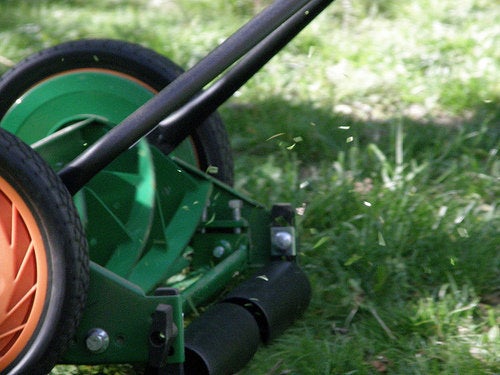
Ok, I get it. You don't want to dig up your lawn and plant a vegetable garden. Lawns can be good for some things, I guess--a family game of touch football, Frisbee golf, throwing tennis balls for the dog, etc. Plus, I admit, it totally sucks when you make a gorgeous diving catch of the ole' pigskin right into your tomato trellis. (No I haven't done it, but this guy I know...)
So, if you must have a lawn, how can you keep it in a way that doesn't require constant watering, chemical fertilizers, and emission-spewing lawnmower...ing?
Jon Clift and Amanda Cuthbert, authors of Water: Use Less--Save More, have a few tips.
- Let the grass grow longer on your lawns. Cutting it short encourages growth, which needs lots of water. Plus, longer lawns last longer!
- Aerate and spike lawns early in the season to promote deep roots.
- Don't feed your lawn fertilizers; this encourages excessive growth and requires lots of water.
- When you cut your lawn, leave the cuttings on it. This will reduce moisture loss and return nutrients to the soil--making next year's lawn greener without chemicals. (If your lawn is really overgrown, compost the first cut.)
- Exercise, not engines! Using a push-mower will cut your carbon emissions, discourage over-cutting, and get you some much needed exercise. Yes. You.
For more quick tips about greening your life, check out the Chelsea Green Guide Series of pocket guides.